Original URL: https://www.theregister.com/2008/09/13/review_sapphire_4850_toxic/
Sapphire 4850 Toxic graphics card
Solving the regular Radeon's heat problems
Posted in Personal Tech, 13th September 2008 08:02 GMT
Review Sapphire’s HD 4850 Toxic graphics card tackles a perceived problem of the reference AMD ATI Radeon HD 485 by changing the cooling package to lower the temperature.
The standard HD 4850 runs at a toasty 80-90°C as a result of having 800 unified shaders humming away inside the GPU. AMD uses a variable-speed fan that spins up to speed as the graphics load rises, a strategy which successfully maintains a constant temperature.
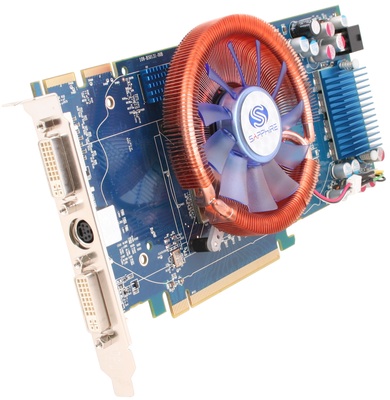
Sapphire's 4850 Toxic: dispersing the regulation 4850's heat issues?
However, you can distinctly hear the fan working away during a gaming session. It’s not loud enough to cause concern but the high GPU temperature seems wrong, despite this being a deliberate design decision on the part of AMD. The HD 4850 chip has a high power draw and despite its high efficiency there's plenty of heat to be dispersed. The £125 HD 4850 uses a single-slot design that radiates waste heat inside the PC case, or you can choose a £175 HD 4870 which is a big, dual-slot card that exhausts through a slotted bracket to the outside world.
Under load, the HD 4850 operates in the high 80s Celsius while the HD 4870 is in the low 80s. While neither card will suffer stability problems, the thought of all that heat may cause you some concern and it also reduces the cards' potential for overclocking.
The Sapphire Toxic takes a surprisingly direct approach to this issue, as it’s off with the standard cooler and on with a Zalman VF900 unit that includes passive coolers for the board's eight memory chips.
If you fancy a bit of DIY, you can buy the Zalman for £24, which bumps up the cost of a stock HD 4850 from £125 to £149. You’d be invalidating your warranty, so it probably makes sense to pay Sapphire £153 for the Toxic.
Crysis 1.21 1280 x 1024 Results
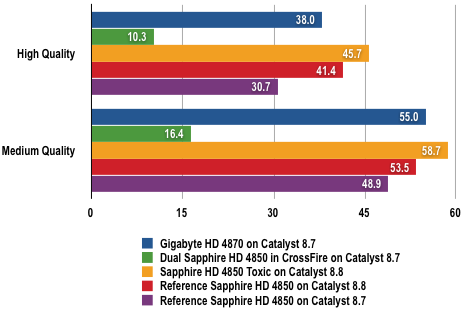
Results in average frames per second
Longer bars are better
3DMark Vantage Results
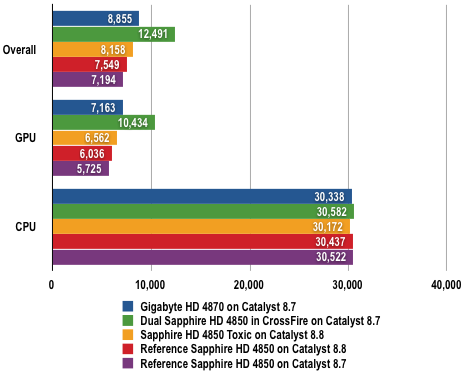
Longer bars are better
3DMark06 Results
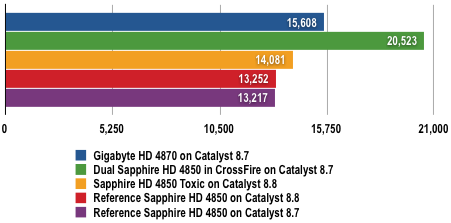
Longer bars are better
PCMark Vantage Results
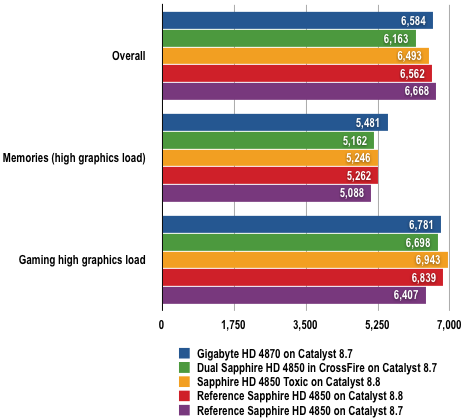
Longer bars are better
Power Draw Results
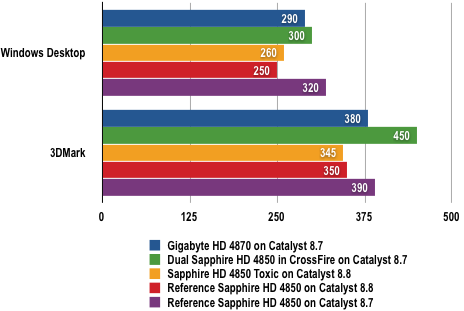
Power draw in Watts (W)
The Zalman cooler uses a copper heatsink against the GPU with two heatpipes to feed the heat to the cooler and its 75mm fan. Although it doesn’t look especially chunky, the Zalman is fairly tall and makes the Toxic a dual-slot design, but on the plus side the cooler is very effective. It drops the operating temperature from 80-odd Celsius to 40°C. but the downside is that the fan runs at a fixed speed and is relatively noisy. That makes the Toxic cooler something of a mixed blessing as it is noisier than the standard HD 4850 during normal Windows duties but quieter when you’re playing a game.
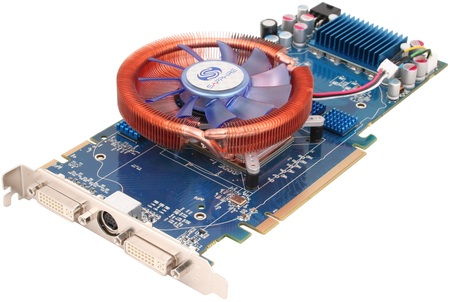
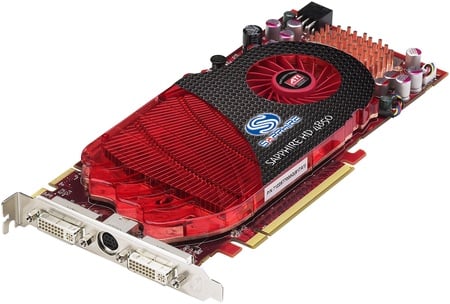
Sapphire's 4850 Toxic (top) and its regular 4850
The problem is that you appreciate peace and quiet when you’re answering emails, shopping at Amazon or writing a review, but it becomes much less of an issue when you’re playing Crysis or Oblivion.
There’s some good news in store as the enhanced cooling offered by the Zalman package has allowed Sapphire to raise the clock speeds from 625MHz/2000MHz to 675MHz/2200MHz. This equates to an extra 11 per cent performance compared to a regular HD 4850, which halves the performance differential between the 4850 and 4870. That gives a pleasing symmetry as the price of the Toxic falls plumb between a basic HD 4850 and an HD 4870 but it also presents Sapphire, which sells all three types of board, with something of a problem.
Anyone looking for maximum value for money should buy an HD 4850, while avid gamers will go for the faster HD 4870 and that means the market for the Toxic is punters whose prime concern is the temperature of their graphics chip. And we’re not sure if that's a significant market.
Incidentally, our testing coincided with the release of Catalyst 8.8 and you’ll see from our figures that this gives a significant advantage in 3DMark Vantage and Crysis compared to the Catalyst 8.7 drivers.
Verdict
The Zalman GPU cooler on the HD 4850 Toxic keeps the graphics chip icy cool but it raises the noise levels noticeably and also lifts the price uncomfortably close to the HD 4870.